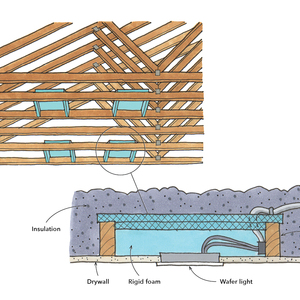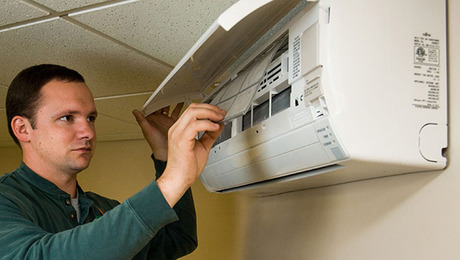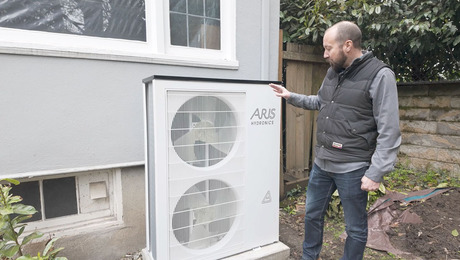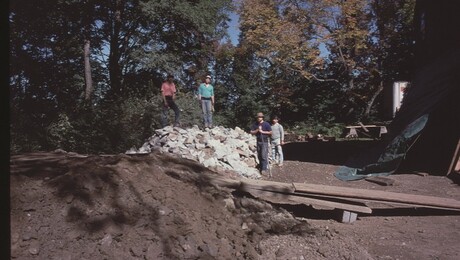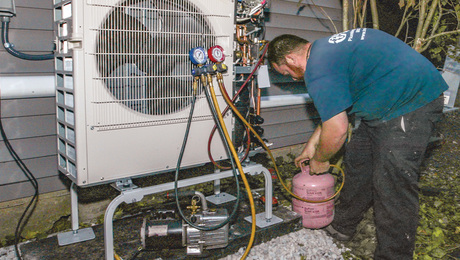Where is the Humidity Going?
Building-science expert Bruce Harley explains the wide swing of moisture content in a home's air from summer to winter, and he offers some tips for controlling it.
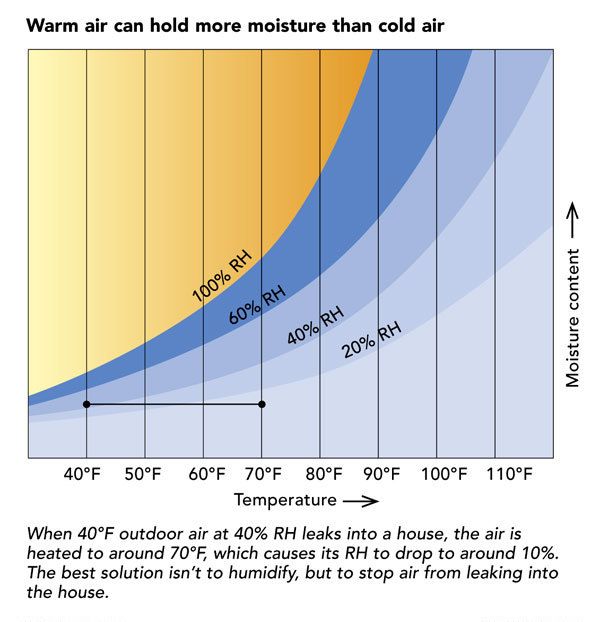
Q:
I’m having trouble maintaining the humidity in my house during the dry winter season. The indoor humidity is around 20% to 25%, while the outdoor humidity is 40%. During summer, the indoor humidity was around 60%, and outdoors, it was 80%. What gives?
Keith Martin, Lorton, VA
A:
Bruce Harley, an engineer and the author of Build Like A Pro: Insulate and Weatherize, replies: I’m going to answer your question in two parts. Part 1: Why is humidity lower in the winter than it is in the summer? Part 2: What humidity level should I target?
First, though, I need to explain that we’re talking about relative humidity, not absolute humidity. Relative humidity (RH) is the amount of moisture in the air compared to the amount of moisture the air is capable of holding. A 50% RH means that the air is holding half the moisture that it’s capable of holding.
The primary reason homes dry out in winter is the air exchange between indoors and outdoors. Warm air can hold more moisture than cold air, so when cold outdoor air leaks into a house and is heated to room temperature, the relative humidity (RH) drops (see the simplified psychrometric chart below). Warming the air is like expanding the size of a water glass without adding more water. Because the glass gets bigger, the glass is less full; same amount of water, but a smaller portion of the available volume. For example, if 40°F outdoor air at 40% RH is heated to 70°F (without adding or subtracting moisture), the air will end up at about 10% RH. The reason that the RH in your home is higher than 10% is because of indoor moisture sources (cooking, showering, breathing).
Air exchange can be driven by leaks in the building envelope, by mechanical ventilation, and especially by ducts that leak into attics, garages, or crawlspaces. If you want to maintain a higher relative humidity in winter, the best way is to control or limit air exchange (see my book for more information).
Now, the second part of the question: What is the right humidity? The American Society of Heating, Refrigerating, and Air-Conditioning Engineers (ASHRAE) recommends 30% to 60% RH for optimum health, so you’re not that far off. Also, many experts agree that you’re better targeting a slightly lower RH range. In particular, the high end of the range should be 50% or less to reduce the risk of mold growth. Although extremely dry conditions can be uncomfortable, 25% RH in winter is really not that bad. And I don’t like to recommend humidifiers for houses.
Perhaps instead of concentrating on where the humidity is going in the winter, you should be concerned with where the humidity is coming from in the summer. Air exchange in a humid summer climate like yours brings in warm, moist outside air, cools it to room temperature, and consequently increases the relative humidity inside the house.
What’s the best way to control both excess humidity in summer and decreased humidity in winter? Seal the building and duct leaks, exhaust moisture sources such as the kitchen and the bathrooms to the outdoors, and, most important, correctly size the air-conditioning equipment. Oversize AC equipment, which is much more common than correctly sized equipment, doesn’t run for long-enough periods to extract sufficient moisture from the air.




